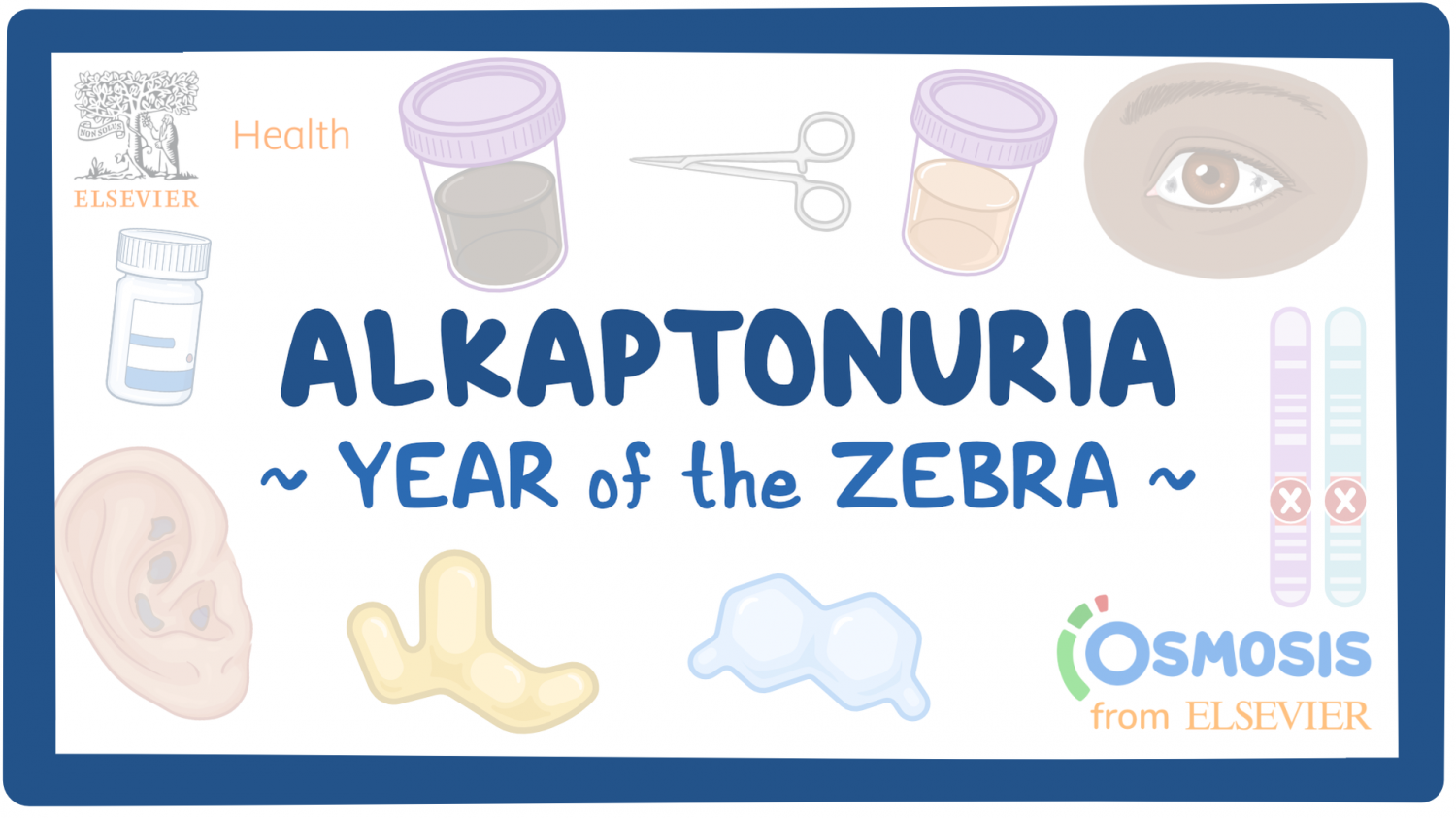
Rare Disease Education: Alkaptonuria
Editor: Kelsey LaFayette, DNP, RN, FNP-C
"When you hear hoofbeats, think of horses, not zebras,” is a common saying in medical education that means you should think of common conditions first, instead of rare ones, in making a diagnosis. “Rare” is a relative term though and about 7,000 rare, or "zebra," conditions affect more than 350 million individuals worldwide. Although these conditions collectively affect an enormous number of people, each of these conditions individually is rare enough that it can be difficult to secure the resources to study them and to develop treatments and cures. Likewise, awareness of rare conditions may be low and health care professionals may not be familiar with their signs and symptoms making it more difficult to reach a correct diagnosis and provide effective treatments.
To increase knowledge about rare conditions, Osmosis and the National Organization for Rare Diseases (NORD) have collaborated on an initiative to bring education and awareness to the public. We are excited to be a part of this initiative because we believe everyone deserves quality health care, no matter how rare their condition.
Zebra of the Week: Alkaptonuria
Most of us can remember a time when we left bananas in the open air for too long and they turned a darker color. Similarly, the earliest and often missed sign of the rare genetic condition Alkaptonuria is urine that turns black when exposed to air for some time.
In Alkaptonuria, the body has a genetic mutation that causes a deficit in the enzyme that breaks down a compound called homogentisic acid. Over time, this acid builds up to eventually cause a variety of health problems, including joint pain and arthritis, darkening of several body areas, and even serious heart complications. Connective tissues, eyes, and even bones can turn blue or black, earning this week’s Zebra the nickname “Black Bone Disease”.
Alkaptonuria is an autosomal recessive disease, meaning that the risk for two carrier parents to both pass the defective gene and, therefore, have an affected child is 25 percent with each pregnancy. It is excessively rare with an estimated incidence of 1 in 250 thousand.
Meet Ann and Rosie
In the above video, we meet inspiring individuals with Alkaptonuria who are at different stages in life.
Ann was a woman who used her fitness to satisfy her love of traveling. Unfortunately, she found her mobility progressively affected at an unusual rate and was misdiagnosed 3 times before finally reaching the correct diagnosis at 49 years of age.
On the other hand, Rosie, now 21 years old, was diagnosed at the age of 2 when her physician father Ian noticed her diapers were of darker color and explored it further. The above stories illustrate the deep need for proper diagnosis in order to reduce the suffering of rare disease patients.
More Information on Alkaptonuria
